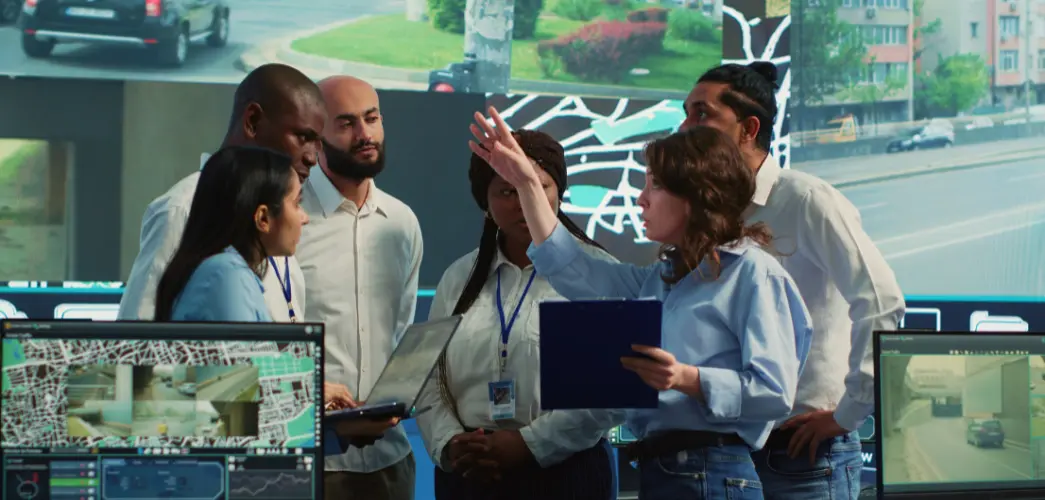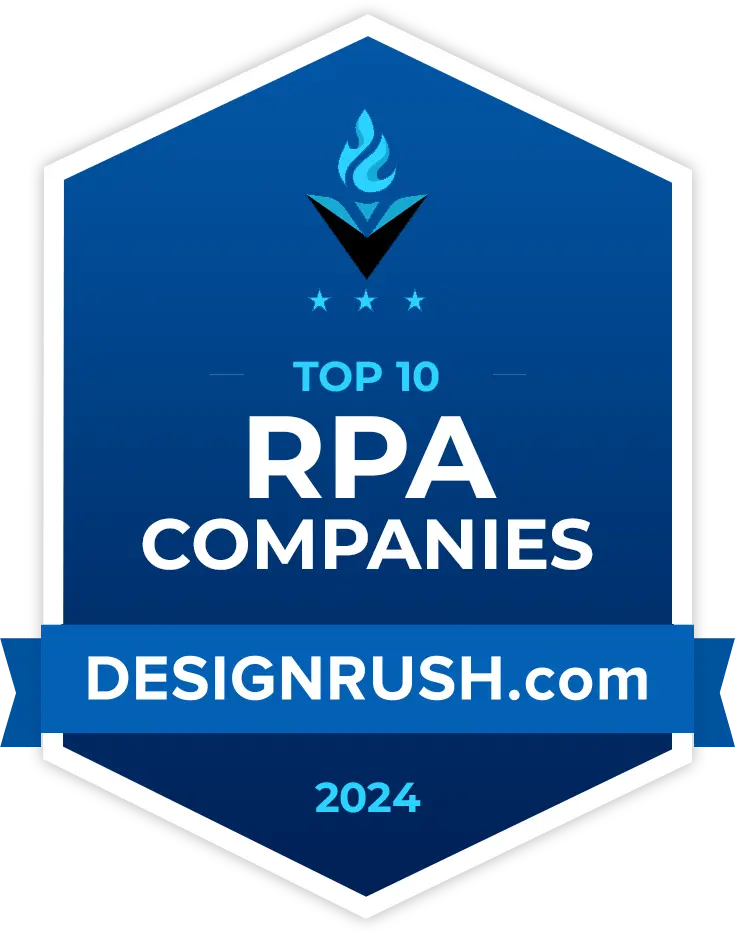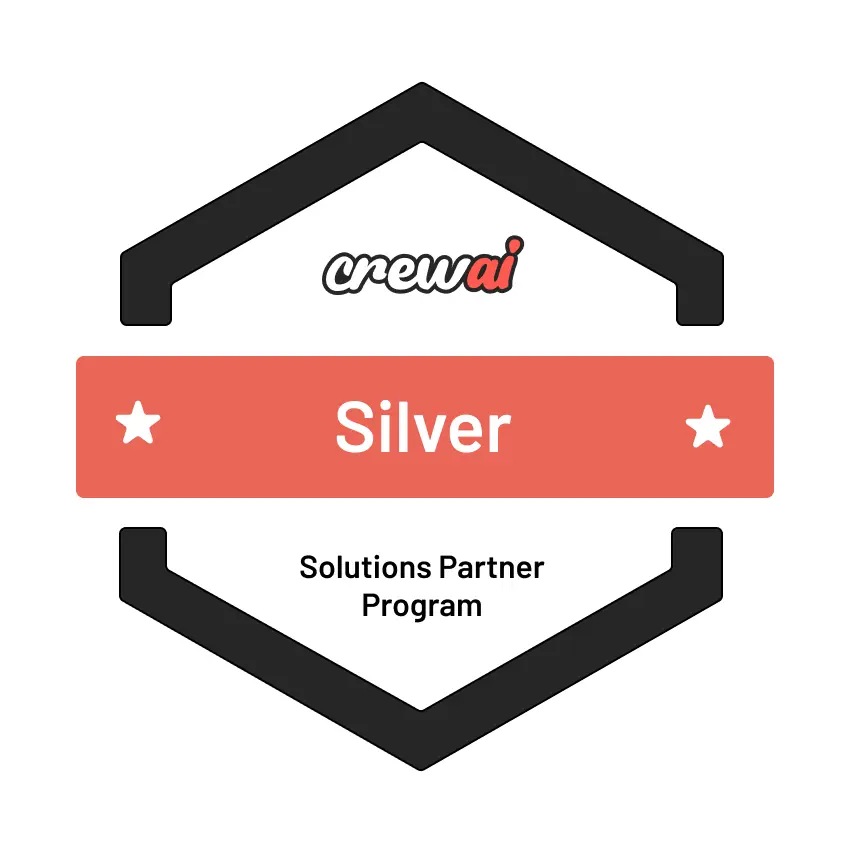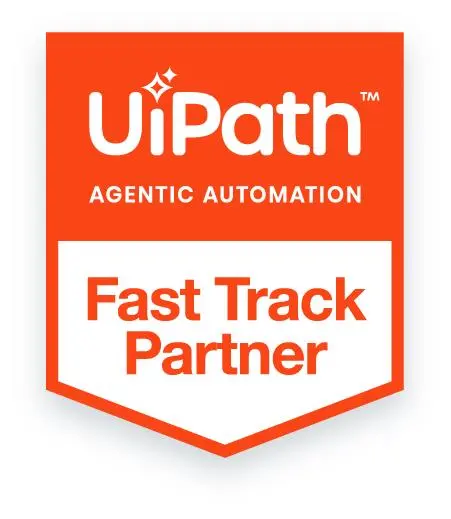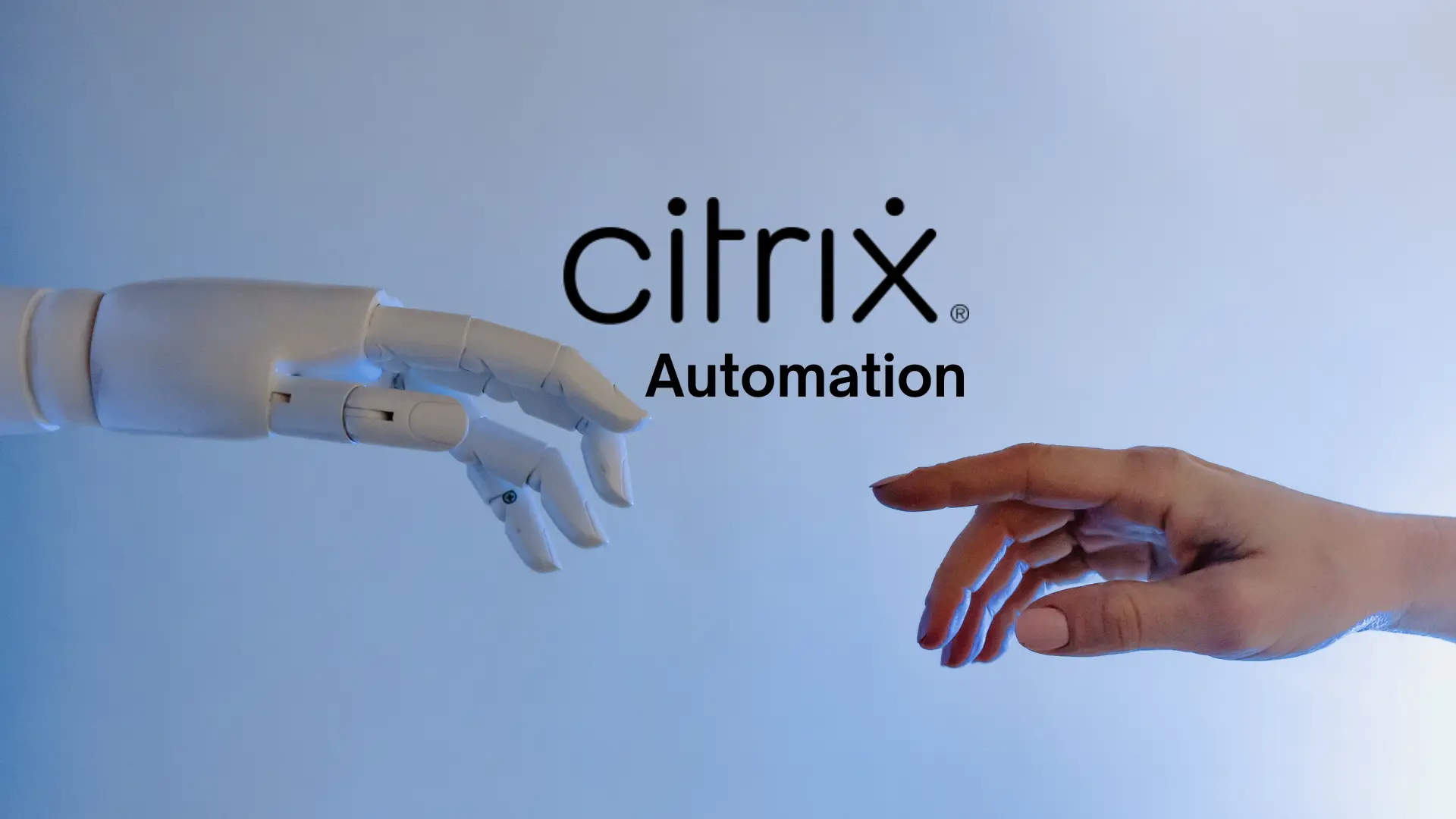
Key Takeaways
- Citrix automation bridges RPA to legacy, non-API systems
- ML enables perception, classification, and decision-making in visual environments
- Careful orchestration, fallback design, and governance are vital
- High ROI is possible even without modernizing core applications
- Agentic AI will push the envelope further, unlocking new levels of adaptability
Robotic Process Automation (RPA) has become essential for modern enterprises aiming to enhance productivity and reduce manual efforts. However, many critical business processes still operate within legacy systems accessed via virtual desktop infrastructure (VDI) environments like Citrix. These systems often lack modern APIs, expose no HTML elements, and require screen-based interaction. This creates a unique challenge: how do you automate something you can only “see” but not “touch”?
Enter Citrix automation—a specialized subset of RPA that enables automation within such virtualized environments. When combined with Machine Learning (ML), it transforms traditional automation into Intelligent Automation (IA). This blog explores how ML + RPA work together to overcome Citrix limitations and drive real business impact.
Also read: How Agentic Process Automation Reduces Operational Downtime?
What Is Intelligent Automation? (In a Citrix Context)
Intelligent Automation (IA) integrates three pillars:
- RPA: Executes rules-based, deterministic tasks across systems
- ML: Handles unstructured data, ambiguity, and decision-making
- Domain Context: Adds business-specific logic for relevance and accuracy
In Citrix environments:
- Bots rely on image-based recognition rather than object selectors
- OCR and ML models are essential for understanding screen content
- IA helps bots “understand” the Citrix interface as a human would
Key Capabilities Enabled by IA in Citrix:
- Smart navigation through menus and forms using visual anchors
- Dynamic error handling based on screen state recognition
- Automated document processing within legacy interfaces
- Decision-making based on historical data and predictive models
This paradigm allows enterprises to build smarter, scalable, and more resilient automation pipelines inside virtualized legacy environments.
Why Combine RPA with ML in Citrix Environments?
While RPA excels at task execution, it struggles with:
- Non-standardized layouts in Citrix
- Unstructured or pixel-based UI interactions
- Dynamic screen content
Machine Learning complements RPA by:
- Interpreting visual data using OCR and computer vision
- Classifying screen states with image-based models
- Predicting outcomes in complex workflows
Benefits of the Combination:
- Automates what was previously too unstructured for RPA
- Brings intelligence to pixel-level screen understanding
- Facilitates human-like decisions in legacy apps
- Reduces dependency on fragile selectors or hardcoded paths
Together, ML and RPA provide a complete automation toolkit for tackling Citrix-based processes.
Key Use Cases of ML + RPA Inside Citrix
| Use Case | Description |
| Invoice Processing | ML OCR reads invoices; RPA types data into Citrix ERP. |
| Claims Processing | CNNs assess image/document type; bots handle form entry in legacy insurance apps. |
| Customer Support | NLP analyzes complaints; bots respond via Citrix-based CRM. |
| Core Banking | ML predicts fraud; RPA initiates KYC updates in Citrix mainframe. |
| Manufacturing Ops | ML classifies maintenance alerts; bots update SAP via Citrix. |
Why These Use Cases Matter:
- They represent high-volume, high-complexity processes
- Often run on legacy systems accessed through Citrix
- Require a mix of perception (ML) and action (RPA)
Architecture: How ML and RPA Work Together in Citrix
A reference pipeline for Citrix automation using ML and RPA:
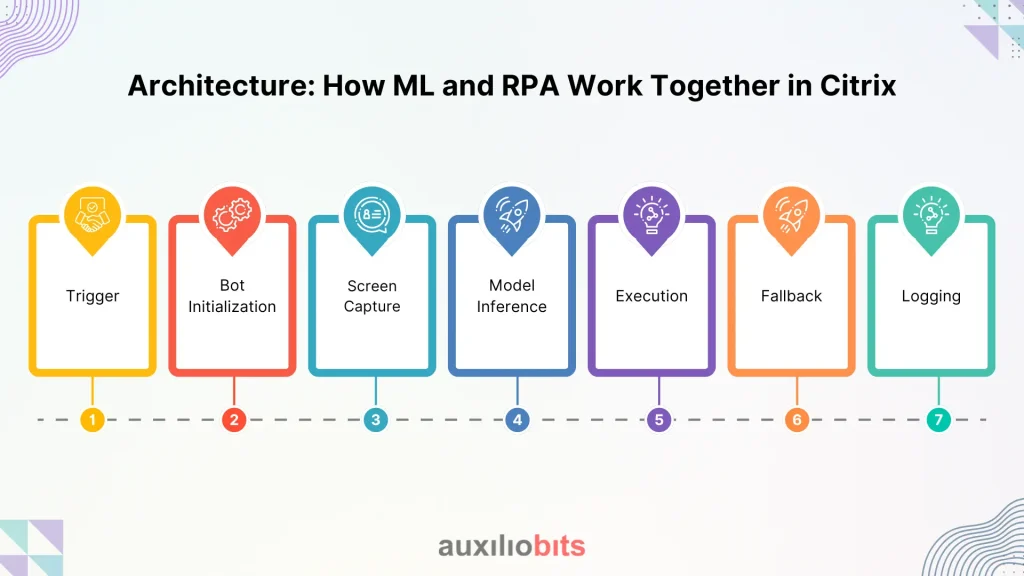
- Trigger: Events like email, schedule, or file drop
- Bot Initialization: Bot opens Citrix, logs in, and navigates
- Screen Capture: Bot takes screenshots or grabs text via OCR
- Model Inference: Screenshots are passed to ML models:
- Classify the screen or document type
- Extract entities (e.g., amounts, names)
- Predict next action (approve, reject, escalate)
5 Execution: The Bot uses mouse clicks and keystrokes to act in Citrix
6. Fallback: If confidence is low, the case is routed to a human
7. Logging: All steps are monitored and auditable
Design Patterns for Citrix + ML Automation:
- Anchor-based clicking: Locate stable screen elements
- Image similarity scoring: Determine current screen state
- Queue-based orchestration: Ensure retry and failover support
- Streaming architecture: Use Kafka/Service Bus to avoid blocking
Best Practices for ML + RPA in Citrix
To succeed in these complex environments:
- Start small but complete
- Choose an E2E flow like invoice processing or KYC onboarding
- Define a strict data contract.
- Ensure schema versioning betweenthe bot and the model
- Monitor continuously
- Track latency, model accuracy, and straight-through-processing (STP) rate
- Include fallback workflows
- Human-in-the-loop reviews enhance trust.
- Embrace MLOps
- Automate retraining when model performance drops.
- Secure APIs and Payloads
- Encrypt ML calls and log access for audit compliance
- Document and explain decisions
- Especially critical in regulated domains
- Involve SMEs early
- Reduce blind spots by pairing domain and data experts
Overcoming Citrix-Specific Challenges
| Challenge | Mitigation Strategy |
| Dynamic Screens | Use ML to classify the screen state from a screenshot |
| Variable Resolutions | Train models across resolutions, and define dynamic anchors |
| UI Latency | Use smart waits + screen pixel polling |
| OCR Errors | Use domain-trained OCR and noise reduction filters |
| Unreliable Navigation | Anchor clicks + ML screen flow predictions |
| Lack of APIs | Lean into surface-based automation with ML assistance |
Additional Tips:
- Always test bots in real Citrix latency conditions
- Version-control screen templates
- Avoid hardcoding screen coordinates
Real-World Impact of Citrix Automation
Legacy systems, especially those accessed via Citrix, have long been seen as automation-proof, but real-world success stories prove otherwise. When Robotic Process Automation (RPA) is paired with Machine Learning (ML), even the most constrained environments can be transformed for speed, accuracy, and scale.
1. Care Provider: Automated Registration into Citrix-Hosted EHR
Healthcare organizations often rely on Electronic Health Records (EHR) hosted in Citrix environments that are not API-friendly or web-accessible. Manual registration is time-consuming and error-prone.
What was automated:
- ML models extracted patient demographics and appointment info from scanned forms.
- RPA bots logged into the Citrix-based EHR, navigated menus via computer vision, and populated the fields.
Results:
- 85% reduction in manual data entry.
- Saved over 10 full-time equivalents (FTEs).
- Cut patient wait time by 30%.
This shows that even with Citrix in the loop, front-desk bottlenecks can be resolved with ML-assisted RPA.
2. Global Bank: Screen Classification for Legacy Reconciliation System
Financial institutions often use decades-old reconciliation platforms with fixed interfaces inside Citrix. Previously, operations teams manually classified mismatched transactions across screens.
What was automated:
- A computer vision ML model classified the type of transaction mismatch by reading screen content.
- Bots then tagged and routed the cases accordingly.
Results:
- Bots handled 80% of transaction volume.
- Reduced SLA penalty costs by $2 million annually.
This project proved that legacy screens—even in Citrix—can be “understood” by ML and acted upon by RPA, leading to direct financial impact.
3. Insurance Company: ML-Triaged Motor Claims from Images
Insurers still deal with fragmented systems and legacy claim processing apps—often hosted in Citrix. Motor claims, in particular, require judgment to determine whether a claim is low or high risk.
What was automated:
- ML models analyzed accident photos and documents to classify claim severity.
- Low-risk claims were handed off to RPA bots that logged into legacy systems and processed them end-to-end.
Results:
- Claim cycle time dropped from 10 days to just 2 days.
- High-risk cases were fast-tracked to human adjusters.
This blend of ML for judgment and RPA for execution enabled scalable, smart automation in a highly regulated legacy setting.
These examples debunk the myth that Citrix or legacy systems are off-limits for automation. With the right mix of ML intelligence and RPA execution—plus computer vision to bridge UI gaps—enterprises can unlock efficiency, reduce costs, and enhance experience even in their most constrained environments.
Business Value and ROI
Key drivers of ROI in Citrix automation:
Cost Takeout
- Reduction in manual effort (e.g., 1000 hours/month)
- Elimination of error-induced rework
Revenue Uplift
- Faster loan approvals or customer responses
- Increased throughput in constrained legacy workflows
Risk Mitigation
- Fewer compliance breaches due to consistent ML decisions
- Fraud detection and SLA monitoring are automated
ROI in Numbers:
- STP rates increase from 40% to 85%+
- NPS scores rise due to faster response times
- 50% reduction in processing costs in high-volume processes
Skills, Teaming, and Governance
Technology alone is not enough. Citrix automation requires a coordinated effort:
Team Roles:
- RPA Developer: Focuses on Citrix UI navigation and orchestration
- ML Engineer: Builds models for OCR, classification, or prediction
- SME / Analyst: Identifies process logic, edge cases, and exceptions
- Compliance Officer: Ensures secure and auditable operations
Operating Model:
- Two-in-a-box: Each initiative has one process and one ML expert
- Center of Excellence (CoE): Sets standards, libraries, and monitoring norms
- Governance Board: Reviews ethical, risk, and compliance aspects
Training & Enablement:
- Train RPA devs on ML basics (e.g., concept drift, inference latency)
- Train data scientists on RPA quirks (e.g., Citrix fragility, screen anchors)
- Host joint design ceremonies to reduce siloed development
The Road Ahead: From Models to Agents
Next-gen automation within Citrix will be powered by agentic AI:
- LLMs will:
- Read screens
- Summarize content
- Draft responses or RPA scripts in real-time
- Reinforcement learning will:
- Let agents optimize for KPIs (e.g., Net Promoter Score)
- Test multiple response strategies before choosing the best
- Edge ML will:
- Run models on devices near scanners or sensors
- Preprocess documents before they even enter the Citrix app
- Regulation will mandate:
- Transparency dashboards
- Audit logs for every prediction and click
Conclusion
Legacy systems are no longer end-of-life. With Citrix automation powered by Machine Learning, businesses can:
- Extend automation into virtualized environments
- Infuse decision-making into manual processes
- Accelerate workflows without replatforming legacy apps
The combination of ML and RPA within Citrix isn’t just a workaround—it’s a competitive advantage. Organizations that embrace it today will be tomorrow’s intelligent enterprises.




